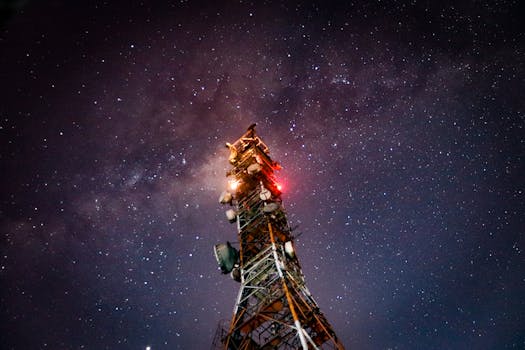
MEO Satellites: Revolutionizing Global Connectivity with Medium Earth Orbit Technology
MEO satellites, or Medium Earth Orbit satellites, are a type of satellite that operates in an orbital altitude of approximately 2,000 to 36,000 kilometers above the Earth’s surface. This range is significantly lower than the Geostationary Earth Orbit (GEO) satellites, which orbit at an altitude of around 36,000 kilometers. The lower altitude of MEO satellites allows for faster and more reliable connections, making them an attractive option for a wide range of applications, including telecommunications, navigation, and Earth observation.
The use of MEO satellites is becoming increasingly popular due to their ability to provide global coverage with fewer satellites than traditional GEO systems. This is because MEO satellites have a larger footprint on the Earth’s surface, allowing them to cover a wider area with a single satellite. Additionally, MEO satellites have a lower latency than GEO satellites, which is critical for applications that require real-time communication, such as video conferencing and online gaming.
How MEO Satellites Work

MEO satellites work by transmitting and receiving signals to and from Earth stations, which are located on the ground. The signals are transmitted to the satellite, which then amplifies and re-transmits them back to Earth, allowing for communication between two distant points. The satellites are equipped with transponders, which are devices that receive and re-transmit the signals, and antennas, which are used to transmit and receive the signals.
The orbit of a MEO satellite is not geostationary, meaning that it does not remain stationary above a fixed point on the Earth’s surface. Instead, the satellite moves in a curved path, which allows it to cover a wide area of the Earth’s surface. This means that a network of MEO satellites is needed to provide continuous coverage, with each satellite handing off to another as it moves out of range.
Applications of MEO Satellites

MEO satellites have a wide range of applications, including telecommunications, navigation, and Earth observation. In the field of telecommunications, MEO satellites are used to provide broadband internet access, mobile phone coverage, and other communication services to remote and underserved areas. They are also used to provide backup communication services in the event of a natural disaster or other emergency.
In the field of navigation, MEO satellites are used to provide location information and timing signals, which are used by a wide range of applications, including GPS, aviation, and maritime navigation. They are also used to provide navigation services for autonomous vehicles, such as self-driving cars and drones.
In the field of Earth observation, MEO satellites are used to collect data on the Earth’s surface, including weather patterns, ocean currents, and land use. This data is used to support a wide range of applications, including weather forecasting, climate monitoring, and natural resource management.
Benefits of MEO Satellites

MEO satellites offer a number of benefits over traditional GEO satellites, including faster and more reliable connections, lower latency, and global coverage with fewer satellites. They are also more resistant to interference and jamming, making them a more secure option for sensitive communication applications.
Overall, MEO satellites are an important part of the global satellite industry, offering a wide range of benefits and applications. As the demand for satellite-based services continues to grow, the use of MEO satellites is likely to become increasingly popular, providing faster, more reliable, and more secure connections to people and organizations around the world.
See more:
